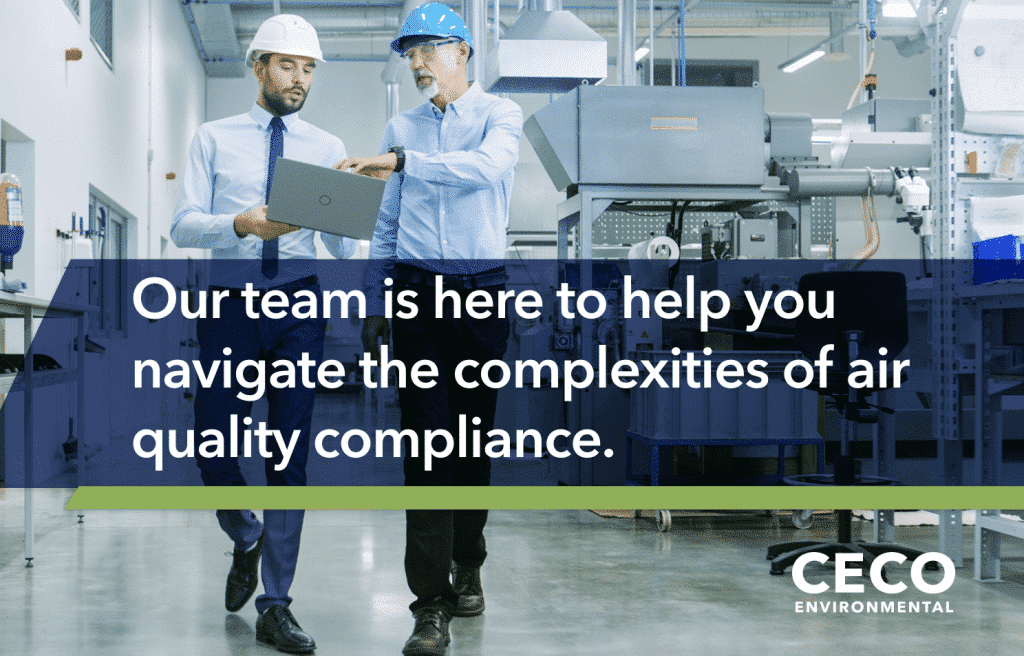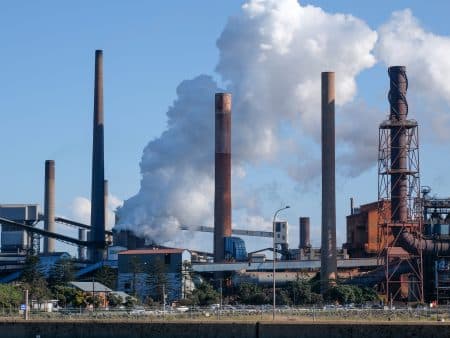#renerativethermaloxidizer #RTO #meatprocessing #smokehouse. #coffeeroasting #litho #ethanolprocessing #spraydryer #pharmaceutical #foodprocessing
Have you ever found yourself confused by where to start when it comes to air compliance? Navigating state, local and federal EPA regulations can be a daunting process, especially for new plants, adding a new process or increasing productivity of existing processes.
Each state, province (even cities or regions) and industry must adhere to different compliance regulations. Finding information that is specific to your process and easily understood can be challenging and time-consuming.
CECO Environmental can help provide you with a roadmap and direction on your journey to achieve cost-effective air abatement and compliance.
Which compliance steps and direction should I take next?
With over 40 years of experience in the industrial clean air industry, I have received many calls from both corporate and individual plant sites asking for advice to ensure their business is compliant with EPA regulations.
The two major concerns that most companies have: 1) what do we need to do to be compliant with air abatement regulations at the federal, regional, local and/or state EPA level, and 2) how do we achieve increased production rates on existing process sources? (For example, if a facility has an older and somewhat inefficient air abatement system, does it have to be scrapped, or can it be rebuilt and refurbished to handle increase airflow and provide lower energy usage?)
Every process is different, so there is no “one size fits all” answer. However, some basic guidelines can help avoid fines, court-ordered settlements and/or production caps, and limits on process run times.
Be Honest. Be Upfront. Be Proactive. Be Knowledgeable.
Get in touch with your local Air Board or Department of Environmental Protection (DEP) and Department of Environmental Conservation. Before you start any project, make contact with these offices and get their responses in writing. Schedule a meeting with the Air agency for guidance and see where your facility or site stands on current potential to emit as well as actual VOC and air emissions.
1. Analyze and map your process(es) and emission points (this data may be on past air reports).
Be knowledgeable about your existing and potential new future process sources. Prepare a process flow chart or diagram and details on the existing or future emission source(s) with any known annual pounds per hour or tons per year throughput.
Quantifying emissions may involve hiring a third part stack and process testing form to measure actual gaseous emissions coming from your facility’s existing stacks.
2. Quantify your process.
Confirm the annual VOC and air emissions based on annual usage or purchase/consumption of solvents. Again, testing of the facility stacks and sources may help confirm and quantify air emissions.
3. Consult with a third-party environmental specialist on complex projects or new source review greenfield projects.
If you need help, we can connect you with qualified, independent and experienced experts and testing firms in your area who understand your industry. These are experts who have been in your shoes and have solved similar compliance issues that you are facing.
To say this process can be complex and overwhelming is an understatement. That’s why the CECO Industrial Solutions team is here to help make your job easier and offer you and your business our resource-saving guidance and energy-efficient product solutions.
Our experienced team will help guide you through the myriad of state and federal rules and regulations. We can save your team much time digging through online resources, going down a path that may lead to a dead-end, or worse, following a path that ends in costly fines or reduced production output at your facility.

CECO Adwest can help in multiple ways.
When it comes to EPA compliance, our experience can help:
- Guide you through the compliance air permitting process.
- Estimate and manage your budget for both capital, maintenance and expect energy costs for any required abatement solutions and process modifications and capture systems.
Note: In many cases, the main expense is not the initial capital cost of the VOC Abatement system but a 10 to 20-year lifecycle of energy usage and maintenance. Energy costs in the USA are low today but will most likely trend higher in future years, so you will need specific RTO Oxidizer and VOC Concentrator energy costs, which we can provide for you!
- Connect you with experienced environmental and industry consultants.
- Provide advice on improving existing process capture, duct design, air handling and duct delivery systems.
- Offer market-proven VOC and odor-abatement product solutions you can trust. This could include retrofitting and rebuilding older existing oxidizer, scrubber and dust collector abatement systems.
Often times, multiple air abatement solutions are required for compliance, and we have extensive expertise in providing these integrated solutions. We can also help conserve working capital by evaluating lease versus owning a new abatement system.
At the end of the day, we can help increase plant capacity and output.
We’re here to assist you to increase your plant capacity and output with the highest level of BACT (Best Available Control Technology) while also helping your facility obtain any available energy efficiency incentives and gas and electric utility rebates.
If you have a project you want to talk through, we’re here to offer our air compliance expertise and identify the best next steps. Reach out to us early on in the stages of your project, so you don’t waste time or CAPEX on your compliance journey.
Contact us today at CECO Industrial Air & Fluid Solutions for a free consultation.



